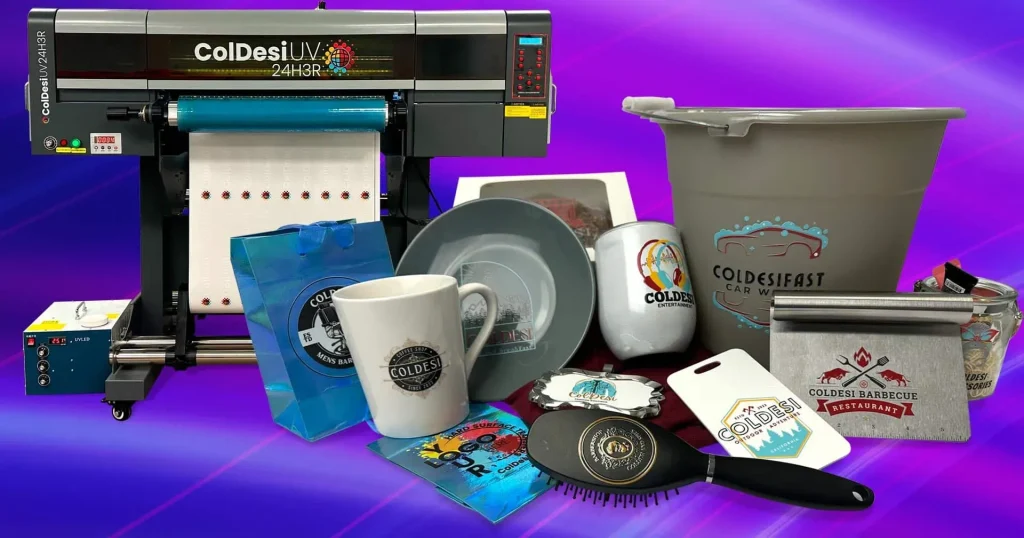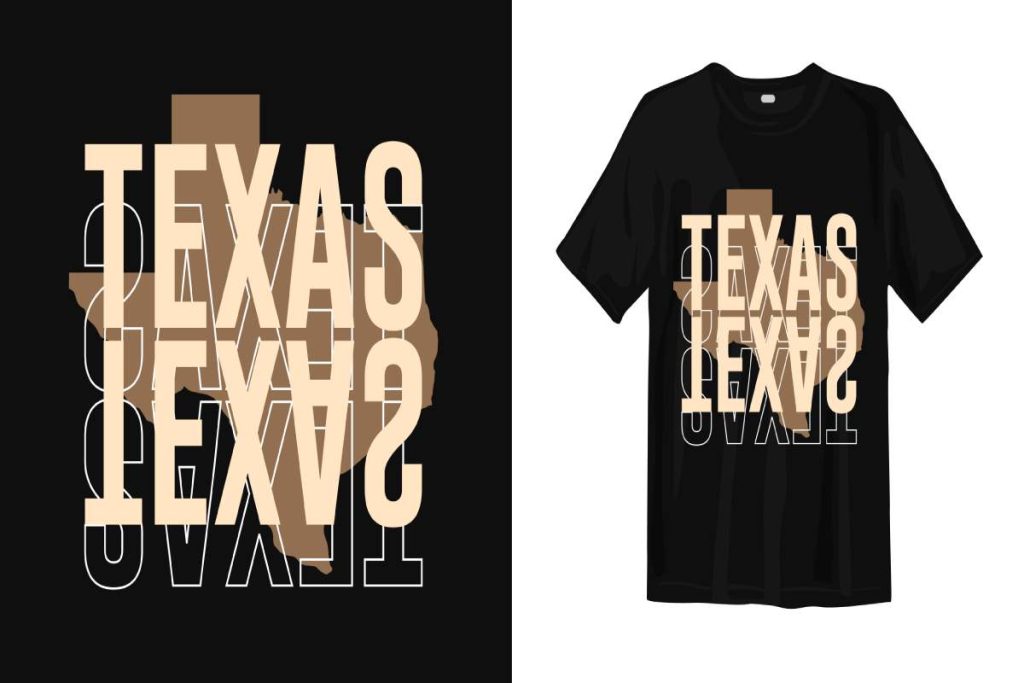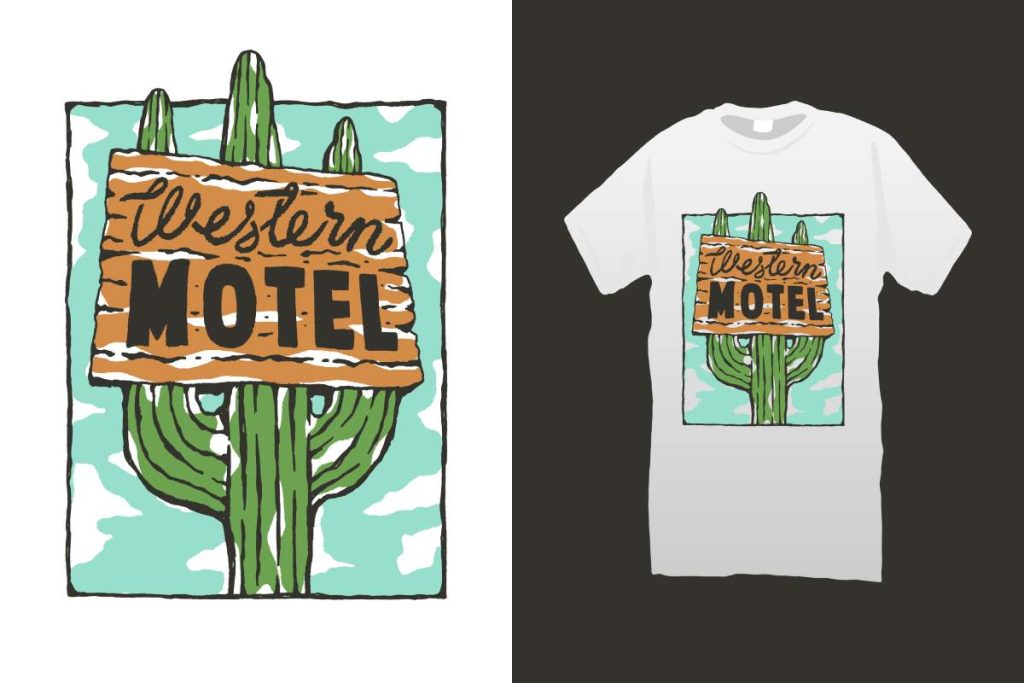UV DTF printing, or UV Direct to Film printing, stands at the forefront of modern printing techniques, offering a blend of vibrancy and durability that is unparalleled. This innovative method revolutionizes the way designs are transferred onto various surfaces, from fabrics to plastics, by utilizing cutting-edge UV curing technology. As we delve into the UV DTF printing process, you will uncover the detailed steps involved, which range from meticulous design preparation to final quality control. Furthermore, this article highlights the importance of sustainable printing practices that have become essential in today’s environmentally-conscious marketplace. Join us as we explore the nuances and benefits of UV DTF printing, positioning it as a game-changer in the world of printing.
Exploring the realm of Direct to Film printing unveils a dynamic landscape of printing possibilities. Also known as UV cured printing, this technique employs a specialized approach to create stunning visuals that boast both longevity and clarity. In this discussion, we will outline the various printing process steps vital to executing high-quality prints efficiently. With an increasing focus on sustainable printing practices, this method is becoming increasingly popular among industries that value environmental responsibility. Let’s navigate through the essentials of the DTF printing process and its significance in shaping the future of printing technology.
Understanding the Basics of UV DTF Printing
UV DTF printing, or UV Direct to Film printing, offers a dynamic way to create vibrant and high-quality prints. This method revolutionizes traditional printing techniques by utilizing specialized UV inks that cure instantly upon exposure to ultraviolet light. This technology ensures that the colors remain bright and sharp, eliminating smudging and enhancing the durability of prints. For businesses aiming for efficiency and quality, the UV DTF printing process stands out as a reliable choice in an industry that demands both speed and precision.
At the heart of UV DTF printing lies the specialized film that acts as a medium for the design. This film undergoes a meticulous preparation to ensure that it can effectively bond with different substrates like textiles, metals, and plastics. Understanding the fundamentals of how UV DTF printing works is essential for anyone looking to leverage this technology, particularly in a market that thrives on aesthetics and longevity.
The Printing Process Steps in UV DTF Printing
The journey of UV DTF printing begins with design and artwork preparation, where graphic artists create high-resolution images tailored for the UV DTF method. This preparatory stage is crucial, as it sets the foundation for high-quality outputs. Following this, the film preparation step involves selecting and treating the film to optimize ink adhesion. These initial steps highlight the importance of meticulous planning and execution in the UV DTF printing process.
Once the film is ready, the printing phase utilizes advanced UV curing technology, where inks are applied and instantly cured using UV lights. This not only enhances color vibrancy but also allows for quick production turnaround. The entire printing process is structured to maximize efficiency while maintaining high standards, ensuring that each print job meets the quality expectations of both businesses and consumers alike.
Sustainable Practices in UV DTF Printing
Sustainability is becoming increasingly crucial in the printing industry, and UV DTF printing is leading the charge through eco-friendly practices. With the introduction of eco-conscious inks and films, businesses are now able to reduce their environmental footprints without compromising on quality. By switching to sustainable printing materials, companies can appeal to the growing number of consumers who prioritize environmental responsibility in their purchasing decisions.
Moreover, the UV curing technology used in DTF printing is more efficient compared to traditional drying processes. As it requires less energy and produces minimal waste, it underscores a significant shift towards sustainability in the production cycle. By embracing these sustainable printing practices, businesses can enhance their market competitiveness while contributing positively to the environment.
The Impact of Technology on UV DTF Printing
Technological advancements have played a pivotal role in the evolution of UV DTF printing. Innovations such as the integration of UV LED technology allow for a broader color spectrum and enhanced print precision. This not only results in higher quality outputs but also optimizes ink usage, which can lead to cost savings for businesses. Understanding the impact of technology helps in appreciating the capabilities and efficiencies of modern printing practices.
As the industry continues to advance, the role of technology in UV DTF printing becomes even more pronounced. Features such as automated printing processes and smart software solutions are streamlining operations, allowing companies to cater to customer demands with speed and accuracy. Staying abreast of these developments is crucial for businesses looking to maintain a competitive edge in an ever-changing market.
Quality Control in UV DTF Printing
Quality control is a critical aspect of the UV DTF printing process, ensuring that the final products uphold the standards expected by customers. Inspectors meticulously examine each print for color consistency, structural integrity, and overall appeal. This rigorous scrutiny guarantees that only the highest quality prints are delivered to clients, which is essential for maintaining trust and satisfaction in a competitive marketplace.
Implementing effective quality control protocols not only helps in identifying defects early in the production process but also enhances overall operational efficiency. By investing in quality assurance, businesses can mitigate risks associated with poor product performance, ultimately leading to improved brand loyalty and reduced costs associated with returns and reprints.
Emerging Trends in the UV DTF Printing Industry
The UV DTF printing landscape is rapidly evolving, characterized by emerging trends that aim to meet market demands. One notable trend is the increased emphasis on customization, with businesses capitalizing on the technology’s versatility to produce unique products tailored to individual consumer preferences. Whether for promotional items or personalized gifts, UV DTF printing is quickly becoming the go-to method for custom printing solutions.
Additionally, the market continues to see a rise in the adoption of UV DTF technology among small and medium-sized enterprises (SMEs). This democratization of advanced printing capabilities highlights the trend towards accessibility in high-quality printing, empowering more businesses to explore creative avenues and expand their offerings without the hefty investment typically associated with traditional printing presses.
Frequently Asked Questions
What is UV DTF printing and how does it work?
UV DTF printing, or UV Direct to Film printing, is a modern printing technique that transfers designs onto specialized film using UV-curable inks. The process begins with preparing artwork, followed by printing directly onto coated film. UV lights cure the inks instantly, creating sharp and vibrant images. This method is known for its durability and versatility, allowing prints to adhere to various substrates such as textiles and plastics.
What are the benefits of using UV curing technology in DTF printing?
UV curing technology in DTF printing offers several advantages, including immediate ink curing, which prevents smudging and ensures vibrant colors. This technology allows for quicker production times compared to traditional methods, enhancing workflow efficiency. Additionally, UV-cured prints are more durable and resistant to environmental factors, making them ideal for high-quality and long-lasting products.
How does the UV DTF printing process differ from traditional DTF printing?
The primary difference between UV DTF printing and traditional DTF printing lies in the ink curing method. In UV DTF printing, UV curing technology is utilized to instantly cure inks after they are applied to the film, resulting in better color accuracy and longevity. Traditional DTF printing often relies on heat transfer for curing, which can be slower and may affect the color quality of the final print.
What are the key steps in the UV DTF printing process?
The key steps in the UV DTF printing process include design preparation, film selection, printing with UV-curable inks, adhesive application, transferring the design to the substrate, and final curing. Each step is crucial to ensure high-quality prints that meet customer expectations for durability and visual appeal.
Is UV DTF printing an environmentally friendly option for printing?
Yes, UV DTF printing incorporates sustainable printing practices, particularly with the use of eco-friendly inks and films. This technology minimizes waste and reduces the carbon footprint of the printing process. As businesses increasingly focus on sustainability, UV DTF printing provides an appealing option for those looking for an environmentally responsible choice in the printing industry.
What types of materials can be printed using UV DTF printing?
UV DTF printing can be applied to a wide range of materials, including textiles, plastics, metals, wood, and glass. The versatility of UV DTF enables businesses to create custom prints for various applications, making it an excellent choice for everything from promotional items to apparel and decorative pieces.
| Step | Description |
|---|---|
| Step 1: Design and Artwork Preparation | Create high-resolution designs using graphic design software to ensure quality prints. |
| Step 2: Film Preparation | Select high-quality film coated for UV ink adhesion to ensure successful printing. |
| Step 3: Printing | Use UV DTF printer with UV-curable inks; the ink is cured instantly using LED technology. |
| Step 4: Adhesive Application | Sprinkle adhesive powder on the inked image to enhance adhesion during transfer. |
| Step 5: Transfer Process | Align printed film with substrate and use heat press to bond the image securely. |
| Step 6: Final Curing | Perform additional UV curing to solidify the print and enhance durability. |
| Step 7: Quality Control | Conduct thorough inspection to ensure color consistency and defect-free products. |
Summary
UV DTF printing is an innovative technique that combines technology and creativity, resulting in high-quality, durable prints that cater to modern consumer demands. This method starts from precise design and artwork preparation, moving through a systematic process that optimally uses advanced UV curing technology. The final quality control ensures that customers receive only the best products, melding efficiency with creativity. As sustainability becomes crucial in the printing industry, UV DTF printing offers eco-friendly options alongside vibrant output, solidifying its relevance in the market. By understanding and utilizing UV DTF printing, businesses can enhance their offerings while promoting environmentally responsible practices.



